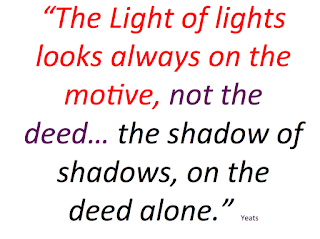Since Love is the most mysterious and seminal of all the cosmic energies I thought I would share the following quotes over the next few blogs to ponder, pray and meditate on.
The sages of all beliefs have a lot to say about the power of love, especially the Ancestors. Where there is no name attributed to the quotes, the wisdom is from the Ancestors.
There are only two emotions; love and fear. The flip side of love is fear and so these quotes will be included too as will others that are pertinent..
It is useful to recognize the four main Yoga paths all of which manifest love in different ways. We are to find the path or paths for us.
The four are; KARMA, BHAKTI, RAJA and JNANA Yoga. All can lead to union with the Divine, These reflect the four elements of intellect, heart, body and mind. Each week I will mention one.
Karma Yoga is the Yoga of action, service and work. In order for it to be Godly it must be done for love, for its own sake and to the best of our ability, not for the consideration of reward, ego, fame etc. It embraces non-attachment to outcome.
There are only two emotions; love and fear. The flip side of love is fear and so these quotes will be included too as will others that are pertinent..
It is useful to recognize the four main Yoga paths all of which manifest love in different ways. We are to find the path or paths for us.
The four are; KARMA, BHAKTI, RAJA and JNANA Yoga. All can lead to union with the Divine, These reflect the four elements of intellect, heart, body and mind. Each week I will mention one.
Karma Yoga is the Yoga of action, service and work. In order for it to be Godly it must be done for love, for its own sake and to the best of our ability, not for the consideration of reward, ego, fame etc. It embraces non-attachment to outcome.























